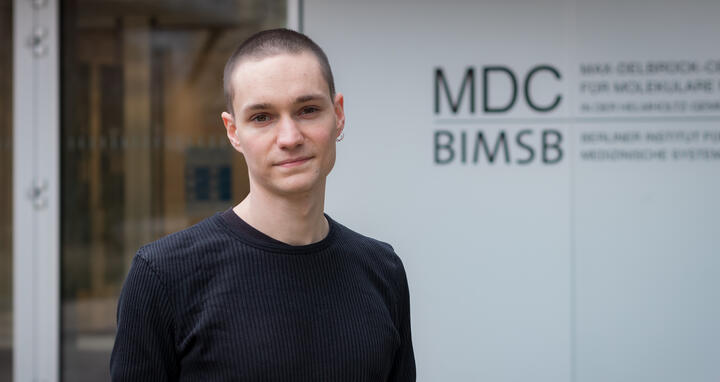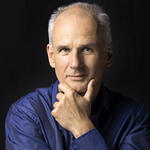Watching aggressive breast cancer as it grows
Women with this subtype get the disease at a younger age. They often suffer recurrences due to metastasis development, and they die more frequently and faster than other breast cancer patients.
The 29-year-old experimental biologist Dr. Ilan Theurillat comes to Berlin from Paris. An EMBO fellowship has brought him to the lab of Professor Nikolaus Rajewsky, Scientific Director of the Berlin Institute for Medical Systems Biology at the Max Delbrück Center for Molecular Medicine (MDC), where he is studying a particularly insidious form of breast cancer: triple negative breast cancer. “Women with this subtype get the disease at a younger age,” Theurillat says. “They often suffer recurrences due to metastasis development, and they die more frequently and faster than other breast cancer patients, which puts a lot of stress on their families.” In addition, minorities like African women are more often affected.
Scientists have a poorer understanding of this lethal breast cancer subtype than other variants. Theurillat would like to change that and is drawing on the expertise and findings of the LifeTime Initiative. Rajewsky is coordinating this initiative along with French epigeneticist Dr. Geneviève Almouzni, Director of the Institut Curie in Paris. Some 200 scientists from 90 research institutions in 21 countries are involved in investigating how widespread diseases such as cancer, cardiovascular diseases and inflammatory diseases develop. Their research involves tracking the origin of the various diseases at the single-cell level and in three-dimensional cell assemblies, so-called organoids.
Fat cells turn into fibroblasts
Theurillat uses in his research a mouse model that developmental biologist Professor Walter Birchmeier created at the MDC. It contains three key mutations that drive triple negative breast cancer: alterations in the TP53 and PIK3CA genes, but also in the Wnt signaling pathway that helps regulate the development of mammary gland tissue. This signaling pathway in particular exerts a strong influence. “We assume that it is activated during puberty, i.e., when the animals are five to six weeks old,” Theurillat says. “Then everything happens very quickly. We see tumors in the breast tissue after just one week.”
Theurillat tracks tumorigenesis over time – from initiation all the way to metastasis. He characterizes the molecular biological changes in the individual cells by analyzing which genes they are currently transcribing and thus translating into proteins.
He is particularly interested in the immediate vicinity of the tumor site, the microenvironment. This is because cancer cells interact with surrounding cells. For example, they release substances that could cause fat cells, which are abundant in breast tissue, to be converted into skin cells. A sheath of fibroblasts gradually envelops the tumor. “We don’t yet know exactly what this sheath does,” Theurillat says. “Maybe it triggers tumor growth or maybe it inhibits it. In any case, in experiments it prevents drugs from reaching the tumor, which would be undesirable in the body.”
Can a single cancer cell become a tumor?
I can use light to target the three cancer genes in a single cell and examine whether a single cancer cell is enough for a triple negative breast tumor to grow. We suspect that it is, but we don’t know for sure.
At this point, the biologist picks up where his doctoral thesis left off. Here he investigated how cells stay the same. He identified with the SUMO molecule one of the many factors that help cells maintain their respective identities. In tumors and their microenvironment, however, the mechanisms of cell identity maintenance are partially overridden in certain instances, enabling fat cells to become fibroblasts.
In a second step, Theurillat intends to use breast cells taken from the animal models to grow an organoid and then study this tissue in more detail. “I can use light to target the three cancer genes in a single cell and examine whether a single cancer cell is enough for a triple negative breast tumor to grow,” he says, explaining his plan. “We suspect that it is, but we don’t know for sure.” The French researcher hopes his discoveries will help find new treatments for this aggressive form of breast cancer.
In addition to his work, he is currently enjoying everything Berlin has to offer. “It is a great city for both research and living. I love techno music, so all the clubs in the city are just fantastic for me.”
Text: Susanne Donner
Further information






